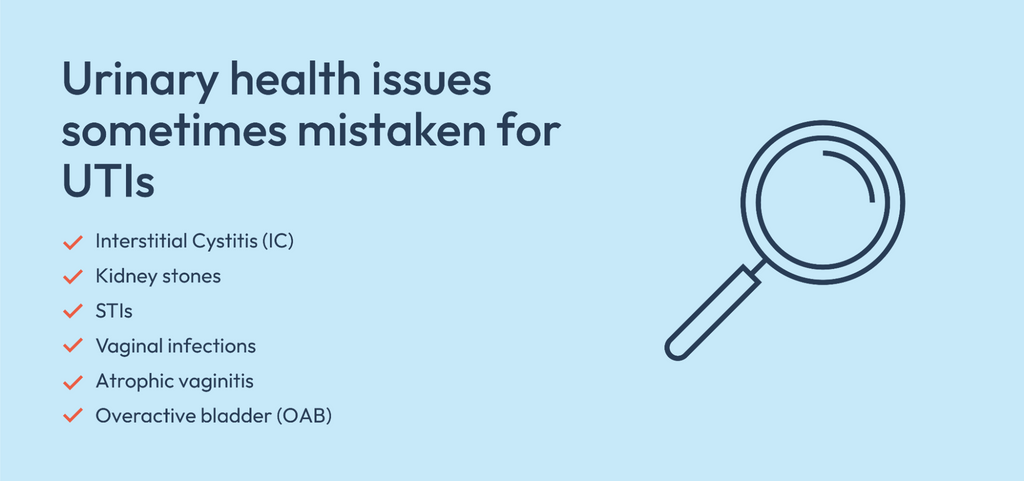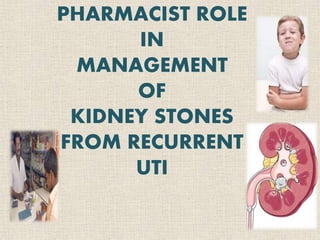Kidney Stones vs UTI: Just How to Identify and Treat Each Condition Efficiently
Kidney Stones vs UTI: Just How to Identify and Treat Each Condition Efficiently
Blog Article
A Comparative Research Study of the Threat Aspects and Prevention Strategies for Kidney Stones and Urinary System Infections: Insights for Better Wellness
The enhancing prevalence of kidney stones and urinary system system infections (UTIs) necessitates a more detailed assessment of their related danger factors and avoidance approaches. By identifying and dealing with these shared susceptabilities, we can create a lot more reliable approaches to mitigate the threats linked with each. Kidney Stones vs UTI.
Introduction of Kidney stones
Kidney stones are a common urological condition, affecting around 10% of people eventually in their lives. These solid mineral and salt down payments form in the kidneys when urine comes to be concentrated, enabling minerals to take shape and bind with each other. The structure of kidney stones varies, with calcium oxalate stones being one of the most prevalent, followed by uric acid, struvite, and cystine stones.
Threat variables for the development of kidney stones include dehydration, dietary practices, weight problems, and specific medical conditions such as hyperparathyroidism or metabolic problems. Signs of kidney stones can vary from light discomfort to serious pain, often offering as flank pain, hematuria, and urinary system necessity.

Understanding Urinary System System Infections
Urinary tract infections (UTIs) represent a widespread clinical condition, specifically among women, with about 50-60% experiencing at the very least one UTI in their life time - Kidney Stones vs UTI. UTIs occur when germs go into the urinary system tract, bring about swelling and infection. This condition can impact any kind of component of the urinary system, including the kidneys, ureters, bladder, and urethra, with the bladder being one of the most commonly impacted site
The scientific discussion of UTIs usually consists of symptoms such as dysuria, enhanced urinary system regularity, seriousness, and suprapubic discomfort. In many cases, people may experience systemic signs such as high temperature and cools, indicating a more extreme infection, possibly involving the kidneys. Diagnosis is primarily based on the existence of symptoms, supported by urinalysis and pee society to recognize the causative microorganisms.
Escherichia coli is one of the most usual microorganism related to UTIs, making up around 80-90% of instances. Risk elements include anatomical predispositions, sex, and particular medical problems, such as diabetic issues. Recognizing the pathophysiology, clinical manifestations, and analysis requirements of UTIs is crucial for effective management and avoidance strategies in prone populations.
Shared Threat Aspects
A number of shared threat variables add to the growth of both kidney stones and urinary tract infections (UTIs), highlighting the interconnectedness of these 2 conditions. Dehydration is a famous risk factor; inadequate liquid intake can result in concentrated pee, advertising the development of kidney stones and producing a beneficial atmosphere for bacterial growth, which can speed up UTIs.

Hormonal elements, especially in women, may likewise act as common risk variables. site web Modifications in estrogen degrees can influence urinary system tract health and wellness and stone formation. Furthermore, excessive weight has been determined as an usual danger variable, where excess weight can lead to metabolic adjustments that prefer both kidney stone growth and urinary system infections. Recognizing these shared threat elements is crucial for understanding the facility relationship between these 2 health concerns.
Avoidance Strategies
Comprehending the common danger variables for kidney stones and urinary system tract infections emphasizes the relevance of applying reliable prevention methods. Central to these approaches is the promo of appropriate hydration, as sufficient fluid consumption dilutes pee, lowering the focus of stone-forming substances and minimizing the threat of infection. Health care experts frequently suggest alcohol consumption a minimum of 2 to 3 litres of water daily, tailored to private demands.
Additionally, nutritional alterations play a critical function. A balanced diet plan reduced in sodium, oxalates, and pet healthy proteins can reduce the development of kidney stones, while boosting the intake of vegetables and fruits sustains urinary system system wellness. Regular tracking of urinary pH and composition can likewise assist in recognizing tendencies to stone formation or infections.
Furthermore, preserving appropriate health methods is important, especially in women, to stop urinary tract infections. On the whole, these prevention over here methods are necessary for decreasing the incidence of both kidney stones and urinary tract infections.
Way Of Living Modifications for Health And Wellness
Applying certain lifestyle modifications can substantially reduce the danger of establishing kidney stones and urinary system system infections (UTIs) A balanced diet plan plays a critical duty; raising fluid intake, particularly water, can dilute pee and help stop stone formation as well as flush out microorganisms that might lead to UTIs.
Normal physical task is likewise essential, as it promotes overall health and wellness and help in maintaining a healthy weight, more reducing the danger of metabolic problems linked with kidney stones. Additionally, practicing good health is essential in stopping UTIs, particularly in females, where important site cleaning techniques and post-coital peeing can play preventive functions.
Preventing extreme high levels of caffeine and alcohol, both of which can exacerbate dehydration, is suggested. Lastly, normal medical exams can aid keep an eye on kidney feature and urinary system health, identifying any kind of early signs of problems. By taking on these way of living modifications, individuals can boost their overall well-being while properly decreasing the threat of kidney stones and urinary tract infections.
Final Thought
Finally, the relative evaluation of kidney stones and urinary system system infections highlights the relevance of shared danger aspects such as dehydration, dietary behaviors, and excessive weight. Implementing efficient prevention techniques that concentrate on sufficient hydration, a balanced diet, and normal exercise can alleviate the incidence of both conditions. By dealing with these common factors with lifestyle alterations and boosted health methods, individuals can enhance their total wellness and reduce their susceptability to these prevalent wellness issues.
The boosting frequency of kidney stones and urinary system tract infections (UTIs) requires a more detailed assessment of their related threat elements and prevention techniques - Kidney Stones vs UTI. The composition of kidney stones differs, with calcium oxalate stones being the most prevalent, complied with by uric acid, struvite, and cystine stones
Treatment options vary based on the dimension and kind of the stone, ranging from conventional management with boosted liquid consumption to clinical intervention like lithotripsy or surgical elimination for larger stones. Additionally, obesity has actually been determined as a typical threat factor, where excess weight can lead to metabolic modifications that prefer both kidney stone development and urinary tract infections.Recognizing the shared risk factors for kidney stones and urinary system infections highlights the value of implementing efficient avoidance strategies.
Report this page